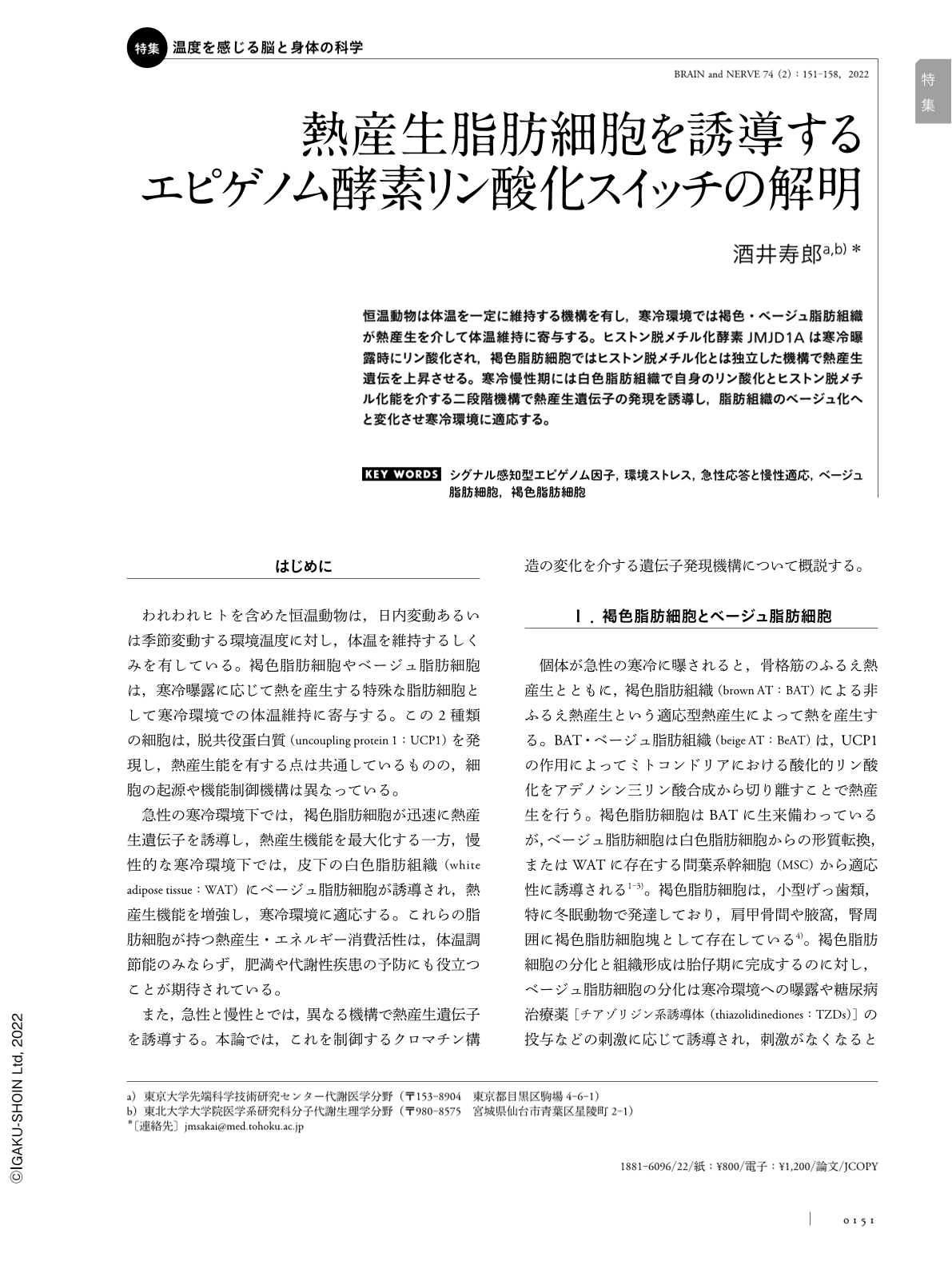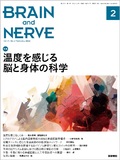Japanese
English
- 有料閲覧
- Abstract 文献概要
- 1ページ目 Look Inside
- 参考文献 Reference
恒温動物は体温を一定に維持する機構を有し,寒冷環境では褐色・ベージュ脂肪組織が熱産生を介して体温維持に寄与する。ヒストン脱メチル化酵素JMJD1Aは寒冷曝露時にリン酸化され,褐色脂肪細胞ではヒストン脱メチル化とは独立した機構で熱産生遺伝を上昇させる。寒冷慢性期には白色脂肪組織で自身のリン酸化とヒストン脱メチル化能を介する二段階機構で熱産生遺伝子の発現を誘導し,脂肪組織のベージュ化へと変化させ寒冷環境に適応する。
Abstract
Brown adipose tissue (BAT) is important for thermoregulation via uncoupling of oxidative phosphorylation. In addition to BAT-driven thermogenesis, mammals use induced browning of subcutaneous white adipose tissue (scWAT) as a mechanism to cope with chronic cold stress. Under acute cold stress in mammals, JMJD1A, a histone H3 lysine 9 (H3K9) demethylase, upregulates thermogenic genes via β-adrenergic signaling in BAT through higher-order chromatin structural changes that occur independent of histone demethylase activity. Following exposure to chronic cold stress, scWAT browning occurs via a two-step process that requires both β-adrenergic-dependent phosphorylation of S265 and JMJD1A-induced demethylation of H3K9me2.

Copyright © 2022, Igaku-Shoin Ltd. All rights reserved.


